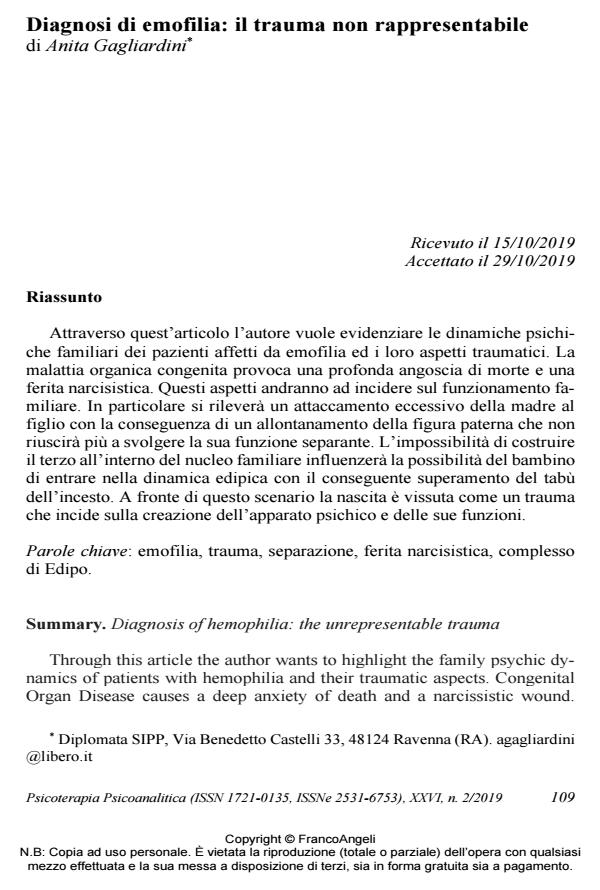Diagnosis of hemophilia: the unrepresentable trauma
Journal title PSICOTERAPIA PSICOANALITICA
Author/s Anita Gagliardini
Publishing Year 2020 Issue 2019/2
Language Italian Pages 13 P. 109-121 File size 151 KB
DOI 10.3280/PSP2019-002006
DOI is like a bar code for intellectual property: to have more infomation
click here
Below, you can see the article first page
If you want to buy this article in PDF format, you can do it, following the instructions to buy download credits

FrancoAngeli is member of Publishers International Linking Association, Inc (PILA), a not-for-profit association which run the CrossRef service enabling links to and from online scholarly content.
Through this article the author wants to highlight the family psychic dynamics of patients with hemophilia and their traumatic aspects. Con-genital Organ Disease causes a deep anxiety of death and a narcissistic wound. These aspects will affect family functions. In particular, an excessive attachment of the mother to the child will result in the dis-placement of the paternal figure that will no longer be able to perform its separating function. The impossibility of having a third person with-in the family will affect the child’s ability to enter into the Oedipal dy-namics with the consequence of overcoming theincest taboo. In the face of this scenario birth is experienced as a trauma that affects the creation of the psychic apparatus and its functions.
Keywords: Hemophilia, trauma, separation, narcissistic wound, Oedi-pus complex.
Anita Gagliardini, Diagnosi di emofilia: il trauma non rappresentabile in "PSICOTERAPIA PSICOANALITICA" 2/2019, pp 109-121, DOI: 10.3280/PSP2019-002006